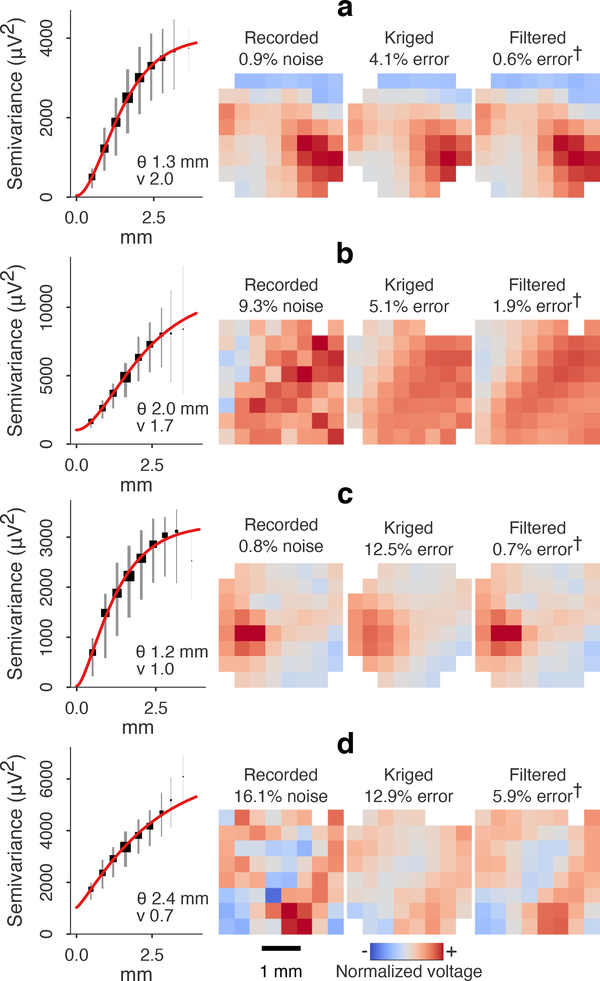Figure 4.
Predictable and non-predictable frames in anesthetized rat auditory cortex. Variograms were binned at ~0.4 mm intervals. Squares and vertical stripes are bin median and IQR scaled to bin count. (a)-(b) Longer range and smooth fields were predicted with errors of less than 10% of the signal variance in the spatially sub-sampled passive electrode (840 μm, a) and active electrode (800 μm, b). The kriging error (residual relMSE minus estimated noise) here was 4.1% and 5.1% for passive- and active-electrode, respectively. Interpolated frames in (a)-(b) were visually similar to the optimal prediction from all electrodes, i.e. filtered voltage. (Note that errors marked “†” are estimated since the true field potential was unknown.) (c) A rough field with (lower smoothness index) was not accurately predicted at 840 μm (passive array). The residual relMSE was 13.3%, with 12.5% due to kriging error. (d) A rough field with lower SNR was not predictable at 800 μm (active array), despite having a long covariance range. Residual error was 29.0% (12.9% kriging error and 16.1% noise). Kriging error in (c)-(d) was characterized by oversmoothing, compared to the optimally filtered frames.

